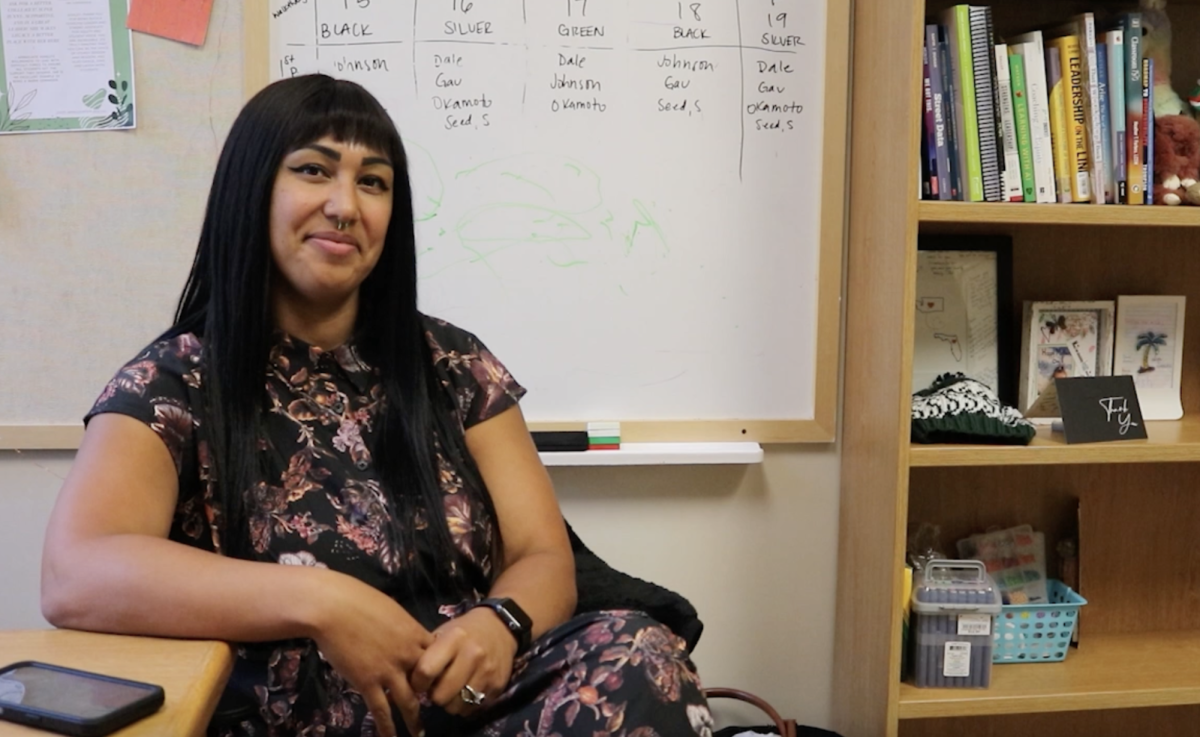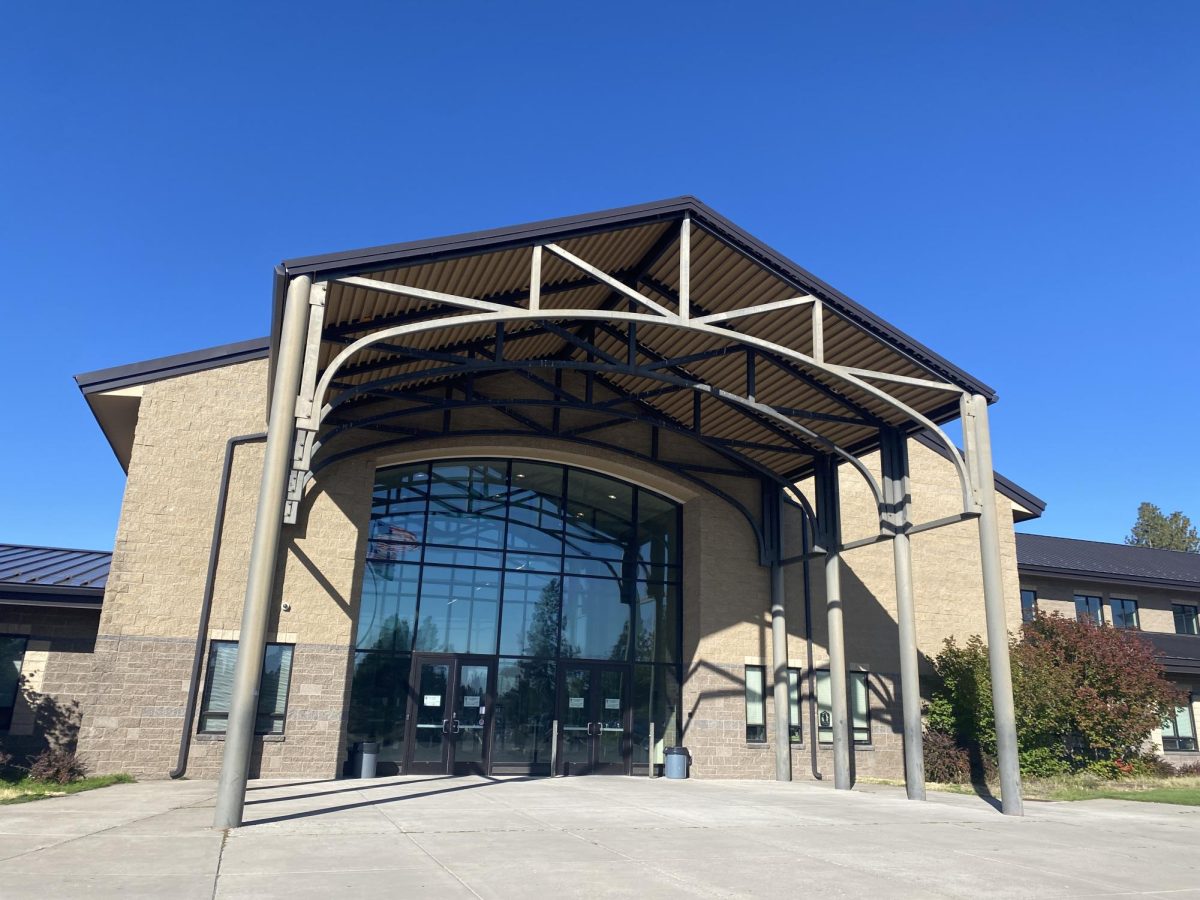The final bell of the day has just rang, and the halls of Summit High School are flooded with students, all in a rush to make it to their respective rides, sports practices and after-school activities. While the pandemonium rages, a group of dedicated students in green and black hoodies gather in the commons, preparing for yet another long practice. They open a garage door, rolling out large pieces of wood and metal that will soon come together to create something truly incredible. This is Chaos Theory, Summit’s highly-regarded robotics team.
Chaos Theory is part of the FIRST (For Inspiration and Recognition of Science and Technology) Robotics League, a worldwide program that allows high school students to get involved in STEM-related activities. The program was founded shortly before the 2015 season, when robotics coaches Charlotte Van Valkenburg and Janette Haines agreed to help a group of Summit students start their own team. Now, with Haines at the helm, Chaos Theory is preparing for its 10th season.
While Summit robotics meets year round, the official season begins in early January when the team transitions from twice weekly practices to meeting six times per week. This intense schedule lasts for two months, and has been dubbed “build season.” The name is apt, as the team spends this eight-week period building a two by two by three-foot robot from the ground up.
“We fabricate [the robot] all ourselves,” said team captain Thielsen Wardlow. “The parts are made in either our shop next to the Commons or in the main shop, which Erdahl runs.”
Build season is exciting yet stressful. During this period, the team divides into three groups—electrical, mechanical and programming—with student leaders overseeing the progress. Although the sections tend to work separately during practice, electrical lead Ash Blakely emphasized the importance of collaboration.
“If you have the electrical team not communicating with the mechanical team, it could end up leading to [not being able to] wire a motor and the entire design has to be scrapped and redone,” said Blakely. With only eight weeks to produce a working robot, a mistake like this costs valuable time and can put the team at a disadvantage for the rest of the season.
When build season comes to a close, it may seem to outsiders that Summit robotics is done for the year. This could not be any further from the truth. After all, track athletes train for weeks, even months, before the first meet, honing their skills and athleticism. Football players spend hours upon hours practicing plays and perfecting their teamwork in preparation for an important game. For Chaos Theory, build season is simply preparation for the culmination of their hard work—competition season
As members of the FIRST Robotics League, Chaos Theory competes annually in the FIRST Robotics Competition, also known as the FRC. All teams compete in several competitions per season, consisting of three on three matches against other robots. Competition objectives change each year, and the robot is built specifically to perform these actions. This year, the robot must be able to hang from a chain and accurately throw frisbees. Summit’s three qualifying competitions take place in Clackamas, Salem and Yakima, and they have the potential to move on to Regionals in Cheney, Washington and Worlds in Houston, Texas.
“I’ve traveled the world, I’ve done just about everything, and this is still the most exciting thing,” said Haines.
With nine very successful seasons under their belt and a tenth in progress, Chaos Theory has established itself as a force to be reckoned with in the robotics world. Now, the team hopes to expand by recruiting more members, both inside Summit and from other schools in the community that do not have a robotics program of their own.
For Haines, it is a personal goal to get more girls involved with robotics. The STEM field is historically male-dominated, and this is reflected in the team’s demographics. However, with proper encouragement and exposure, Haines hopes to remedy this problem.
Wardlow, who has been involved in robotics for years, believes that his experience with Chaos Theory has been invaluable. He has not only polished his skills in design, construction and programming but learned important lessons about collaboration and hard work that will follow him into his adult life, no matter what career path he chooses. Wardlow attributes this to the student-led team environment, in which he and his teammates make the majority of the decisions.
“I’d like people to know that [the team is] by all means open to everybody, no matter your experience level or anything like that,” Wardlow explained. “Really all it takes is a little bit of interest and a lot of dedication.”
“It’s like a family,” said Haines. This is the team’s message for future members—whoever you are, the big, happy and unique Chaos Theory family will welcome you with open arms. The team has brought such a warm and vibrant community to Summit High School in its first decade. With the guidance of Haines and her fellow coaches, members new and old hope to continue this legacy for many more years to come.

































